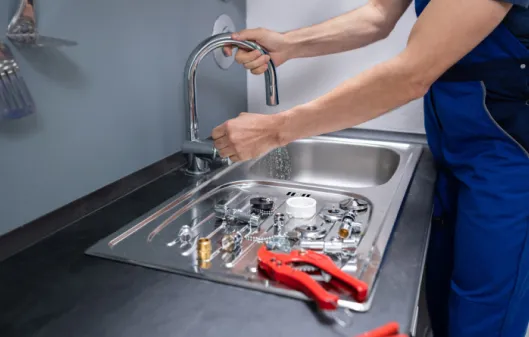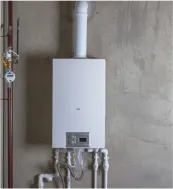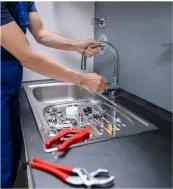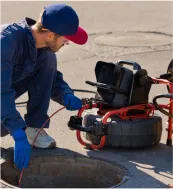

How to Unfreeze Pipes: A Complete Guide
As soon as temperatures drop in Charlotte, NC, frozen pipes can quickly become a homeowner’s worst nightmare. Not only can they disrupt your daily routine, but if neglected, they can burst and cause severe water damage that requires costly repairs. Understanding how to unfreeze pipes safely and effectively is essential to protect your home and prevent long-term issues.
Keep reading to learn how to spot signs of frozen pipes and a step-by-step approach for safely thawing them and avoiding freezing altogether.

Why Do Pipes Freeze?
Pipes freeze when temperatures drop significantly, especially in areas where they are unprotected or water flow is minimal. Key factors that increase the risk include:
- Insufficient Insulation: Pipes in uninsulated spaces like basements, crawl spaces, or attics are exposed to cold air, making them highly vulnerable to freezing.
- Unheated Areas: Pipes in garages, outdoor spigots, or along exterior walls are at greater risk due to prolonged exposure to freezing temperatures without indoor warmth.
- Low Water Flow: Stagnant water in pipes freezes faster than flowing water, as the lack of movement allows cold to penetrate more quickly.
However, you must also know at what temperature do pipes freeze to protect them maximally. Namely, while water freezes at 32°F, pipes become most at risk when temperatures remain below 20°F for extended periods. In this case, proper insulation and preparation are essential to preventing frozen pipes.
Worried About The State of Your Pipes?
Signs Your Pipes Are Frozen
Frozen pipes can be identified early if they show 2 or more of the following signs:
- No Water Flow: Reduced or no water from faucets means ice is blocking the water flow.
- Frost on Pipes: Visible frost or ice forming on pipes is a clear sign of freezing.
- Strange Sounds: Gurgling or clanking noises from faucets may indicate ice blockages.
- Bulging Pipes: Ice expansion inside pipes can cause bulging, cracks, or damage.
If you suspect frozen pipes but aren’t sure how to know if pipes are frozen, inspect areas like crawl spaces, attics, and basements for these signs.
Noticed Some of the Signs?
How to Safely Unfreeze Pipes
Thawing frozen pipes safely requires a careful approach to prevent damage. Here’s how to unfreeze water pipes step by step:
- Turn Off the Main Water Supply: This reduces pressure in the system and minimizes the risk of bursts.
- Open Faucets: Open the affected faucet to allow water to flow once the ice begins to melt.
-
Apply Heat Gradually:
Use these safe methods:
- Wrap pipes with heating pads or warm towels.
- Use a hairdryer on a low setting, moving it back and forth along the frozen section.
- Place a space heater near the pipe (avoid leaving it unattended).
Important: Avoid using open flames like blowtorches, as they can damage pipes or create fire hazards.
So, how long does it take for pipes to unfreeze? This depends on factors like the pipe’s location and the heating method used, but it usually takes 30 minutes to a few hours. If the pipe remains frozen, it’s time to call a professional.
Preventing Frozen Pipes
The best way to deal with frozen pipes is to prevent them from happening. Here’s how to keep pipes from freezing:
- Insulate Exposed Pipes: Cover pipes in unheated areas with foam sleeves or heat tape to prevent freezing.
- Seal Gaps and Cracks: Use caulk or insulation around windows, doors, and walls to block cold air.
- Let Faucets Drip: Allow a slow trickle of water during cold weather to prevent pipes from freezing.
- Maintain Indoor Heat: Set your thermostat to a consistent temperature, even when you’re away.
- Disconnect Outdoor Hoses: Drain all hoses and shut off exterior faucets to protect outdoor plumbing.
For long-term protection, consult M.D. Plumbing & Mechanical about advanced prevention systems, relocating or replacing vulnerable pipes.
Conclusion
Frozen pipes can disrupt your home and lead to expensive repairs, but understanding how to unfreeze pipes and prevent future issues ensures peace of mind. Whether you’re dealing with a frozen pipe at the moment, or want to safeguard your plumbing, M.D. Plumbing & Mechanical offers expert solutions tailored to your needs. Contact us today for reliable, professional service!



